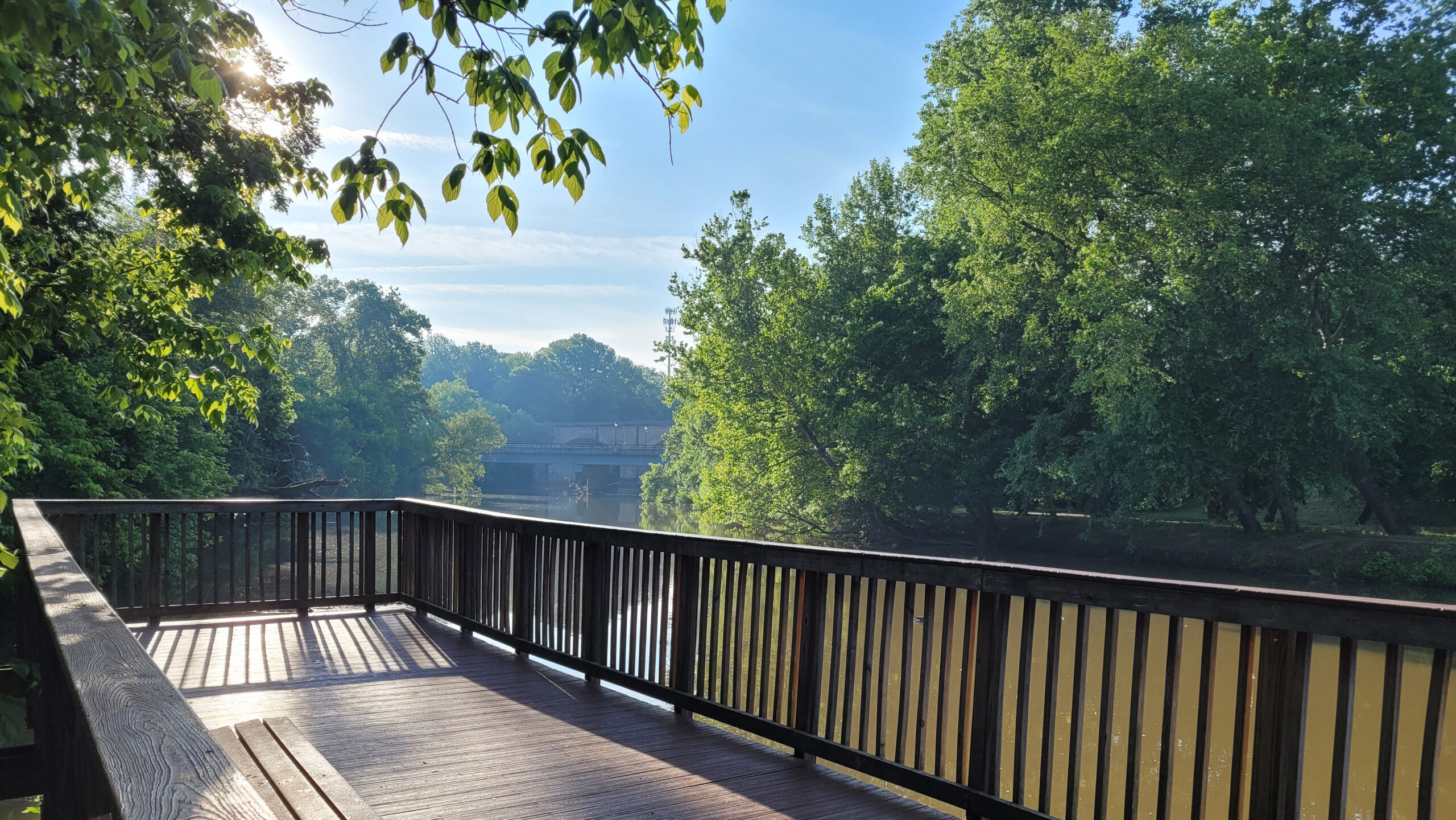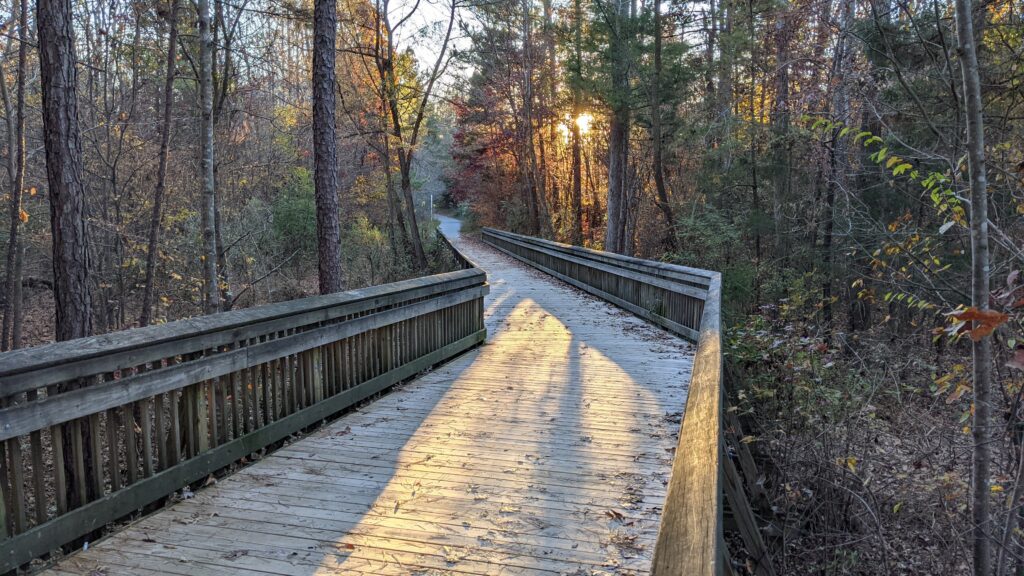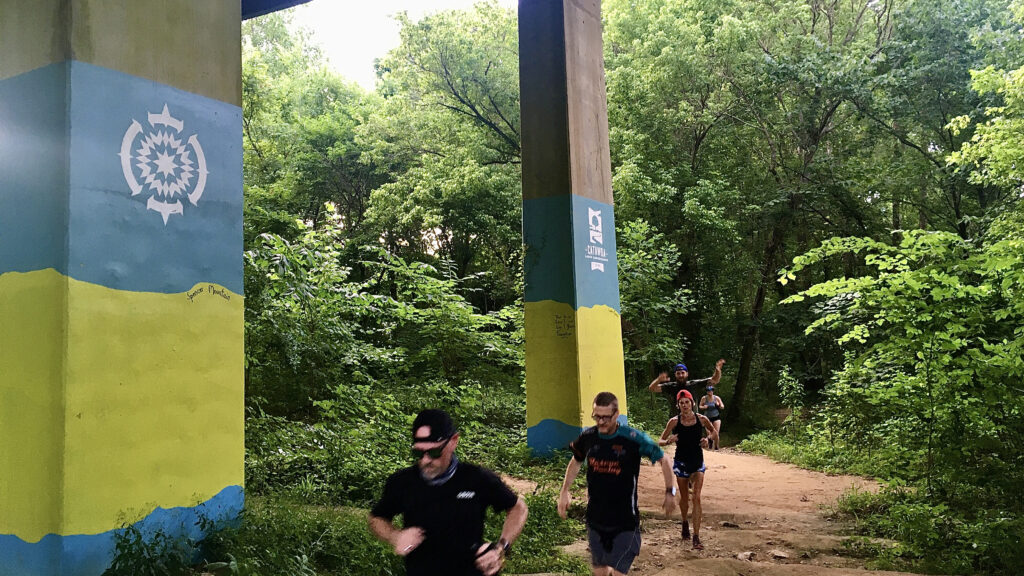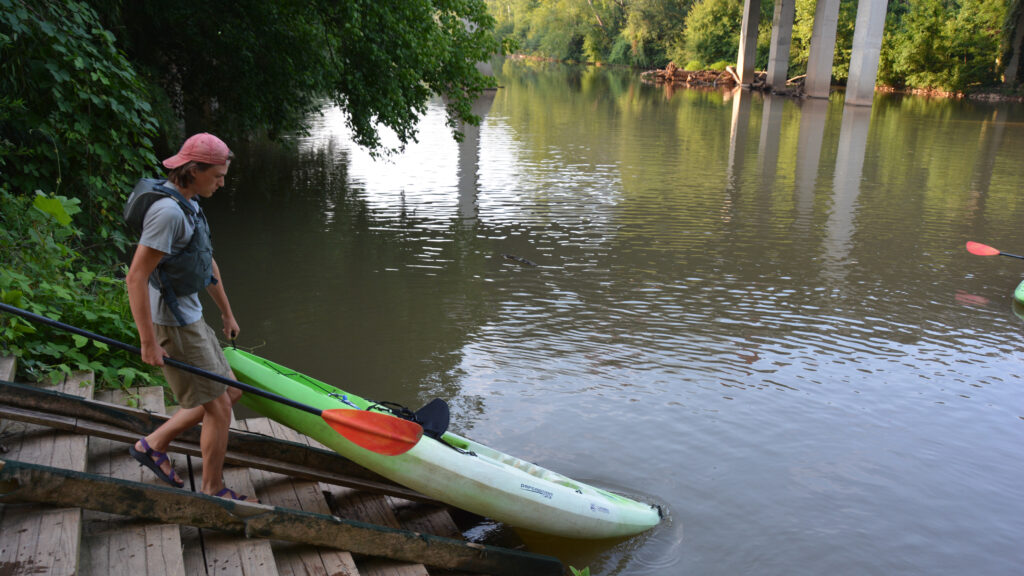ITRE Study Highlights Economic Benefits of Outdoor Trail Network

Plenty of people know that more exercise would do them some good. And for many, parks and other outdoor spaces are the perfect places to get that exercise. In addition to the obvious health benefits, it should also come as no surprise that an outdoor trail network benefits nature.
But you might have never stopped to consider the benefits of places like this from a financial perspective.
NC State University’s Institute for Transportation Research and Education (ITRE) partnered with the Carolina Thread Trail to do just that.
ITRE presented the results of its research study at the 15th Annual Trail Forum, in December 2022. Looking at six trails or greenways within the Carolina Thread Trail, ITRE’s economic impact assessment found that this regional network of walking paths, waterways and more that hikers, bikers, kayakers and other outdoor enthusiasts can enjoy provides a wide range of benefits — and offers a worthwhile return on investment to taxpayers and donors.
“A lot of people know that trails provide them with benefits or they just enjoy being out on the trail walking or biking. But it’s hard to explain to someone who has to make decisions about how to invest funding into their community why a trail is more important than investing in something else,” says Steve Bert, a senior economist in ITRE’s Economics and Policy Assessment group who led the study. “This study provides a way to communicate the whole gamut of values — and the importance of investing — in a network everyday people can use.”
The Carolina Thread Trail, located in the Charlotte region, is a network of existing and planned greenways, trails and blueways that reaches 15 counties and 2.9 million people in the Carolinas.



The Thread Trail currently comprises more than 300 miles of trails and 170 miles of blueway, which are completely open to the public.
But the ultimate vision is for the Thread Trail to eventually encompass over 1,600 miles, according to Jane Love, a community coordinator for the Carolina Thread Trail, which is an arm of the Catawba Lands Conservancy.
“It’s going to take a while before we get to 1,630 miles,” Love says, “But there is a five-year plan to add another 200 miles.”
Bert says that based on the study’s findings, it’s “amazing” to consider the potential economic impact the full-scale trail network could one day provide. A number of local businesses call the Thread Trail home, and along the studied segments alone, Bert says these businesses altogether support “190 jobs for their communities” — and already bring in close to $26 million in annual sales as it is. On average, that breaks down to roughly 15 jobs facilitated per trail mile, Bert says.
Love says that when it comes time to convince potential donors and decision-makers to invest in the Thread Trail, concrete stats like those are crucial to have.
“We often are helping partners convince their decision-makers or we’re pursuing potential donors, so all of these benefits quantified helps us make that message,” Love says. “When it comes to talking to decision-makers, [number of] jobs is always a really important topic.”
In addition to assessing the ways the Thread Trail’s benefits are directly reflected in the economy, ITRE calculated substantial dollar values for healthcare savings, carbon storage and sequestration, and emissions reductions.
To learn more, read the study or reach out to stevebert@ncsu.edu.
- Categories:


